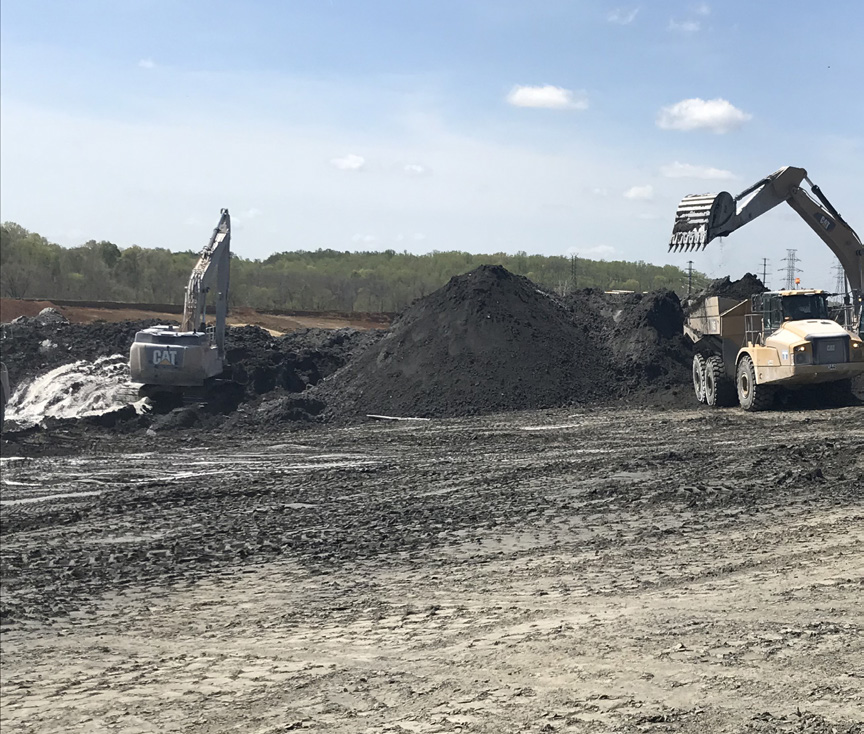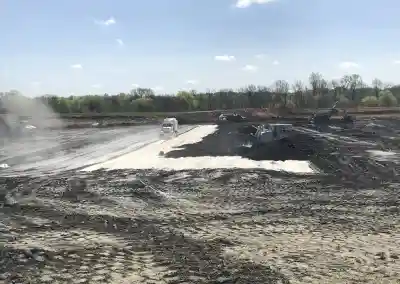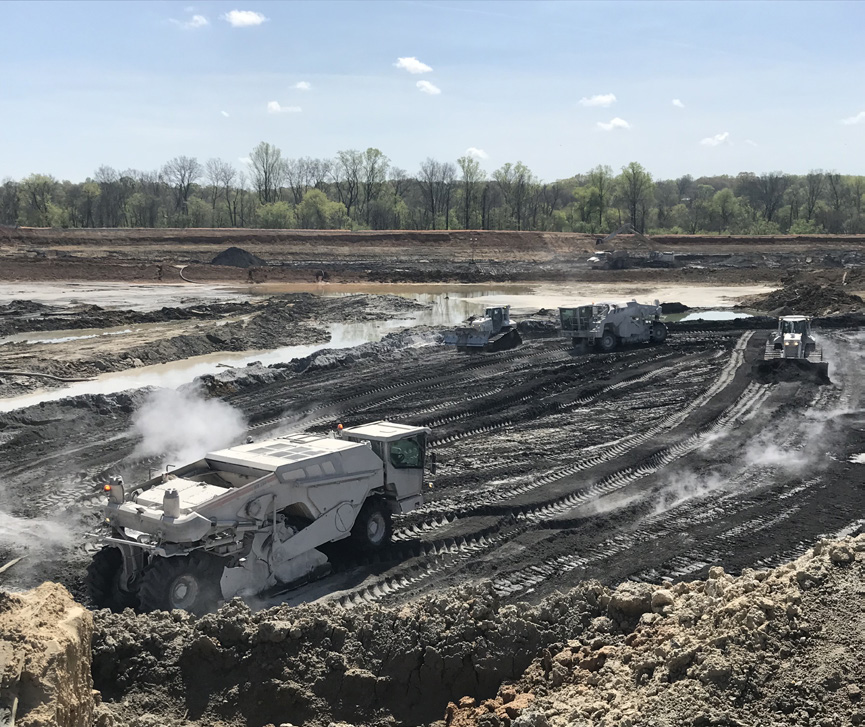North Carolina Ash Pond
Market
Application
Dose Rate
After this power plant experienced the 3rd largest coal ash spill in U.S. history, North Carolina mandated all coal ash ponds be cleaned by 2029. Due to the spill, this site was mandated to be cleaned by May 2019.
Project Overview
- 2014 coal ash spill led to law for ash pond cleanup by 2029
- Four high priority sites had accelerated completion date of May 2019, including site of spill
- Quicklime was used to meet the deadline for drying and placing 800k cubic yards of ash into on-site landfill, with nearly 45k tons used
Background
In 2014, a North Carolina power generating station experienced a rupture in a drainage pipe running under a coal ash pond that was located near a local river. This pond held approximately 4.2M tons of coal ash that had accumulated from years of coal-fired power production. The result of the rupture was 39k tons of coal ash leaking into a local waterway marking the 3rd largest coal-ash spill in U.S. history. This river supplies local communities with drinking water and is a vital part of the natural wildlife and ecosystem in this region. As a result of this, there was a high focus and urgency on repairing the leak and remediating the site. A week after the spill occurred, the broken pipe was repaired stopping the spill.
The spill led to the implementation of a North Carolina state law requiring all coal ash storage ponds to be closed by 2029. Additionally four sites, including this site, experienced breaches into the environment and were deemed high priority to close with a deadline of May 31st, 2019. To close the pond, the ash had to be extracted, dewatered, modified and disposed in an on-site or off-site landfill.
The Challenge
After initial excavation work began in 2016, this ash pond now contained nearly 800k cubic yards of ash that needed to be removed, treated and hauled to an on-site landfill. Eighty-percent of the material was wet, unstable and required dewatering prior to disposal.
The timeline for cleanup was extremely condensed, with only five months to complete the project. The project began in early January 2019 with a mandatory completion day of May 31st, 2019. The bulk of the work had to be completed in the cold / wet winter months, which added additional complexity to the project.
With production levels for excavation set at 10K+ cubic yards per day, a solution was needed to help quickly dewater the ash to maximize production and keep the project on track. Due to the tight deadlines and large volume of clean up required, a constant flow of drying reagents was necessary to keep the project moving to plan.
The Solution
Meeting the time constraints set by the regulators and project owner, a solution was needed that would work quickly to dry and modify the wet, unworkable coal ash, making it more suitable for sending to the on-site landfill.
It was determined that due to the chemical properties of Quicklime and its ability to react quickly with wet and saturated materials, it was the best choice for this project. By mixing the Quicklime with wet ash, the chemical reaction between the moisture (water content) and the available calcium oxide in the product combined to produce an exothermic reaction to consume and drive off the excess moisture. The result was that the ash now has a optimum moisture content making it more suitable for handling and compaction in the landfill.
Implementation
The project took delivery of nearly 400 tons per day of Quicklime to treat approximately 10k cubic yards per day with crews working around the clock 7 days per week. Dose rates of Quicklime averaged 3-5% per cubic yard.
Quicklime fines were delivered via pneumatic trailers and pumped into either storage pigs or directly into the spreader trucks. The spreader trucks would spread the Quicklime fines onto the wet ash and were then followed by mixing machines to incorporate the ash and quicklime together to produce a homogeneous mix. Within an hour, the reaction between the Quicklime and wet ash was complete and the ash was then loaded onto off-road dump trucks and transported to the on-site landfill.
Pebble Quicklime (7/8”x0”) was delivered to the project via dump trucks. The pebble quicklime was then mixed with wet stock piles of excavated ash and allowed to “cook” for a short period time to drive off excess moisture. Once again, after this process was complete the ash was transported to the landfill for proper disposal.
Results
The results of using Quicklime to treat the ash were significant. Within hours of mixing the Pebble Quicklime and Quicklime Fines, the ash was able to be transported and placed into the on-site landfill. By supplying two gradations of Quicklime, the timeline constraints were met and the project was completed ahead of schedule.
North Carolina Ash Pond
Case Study


